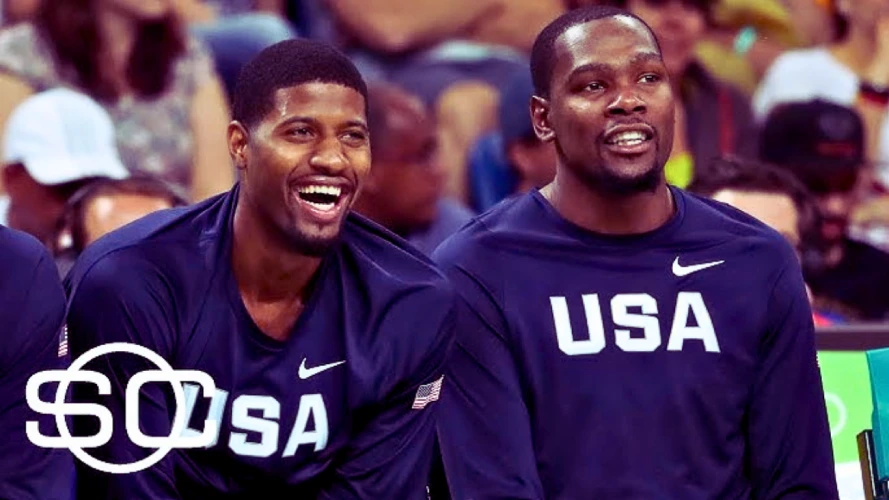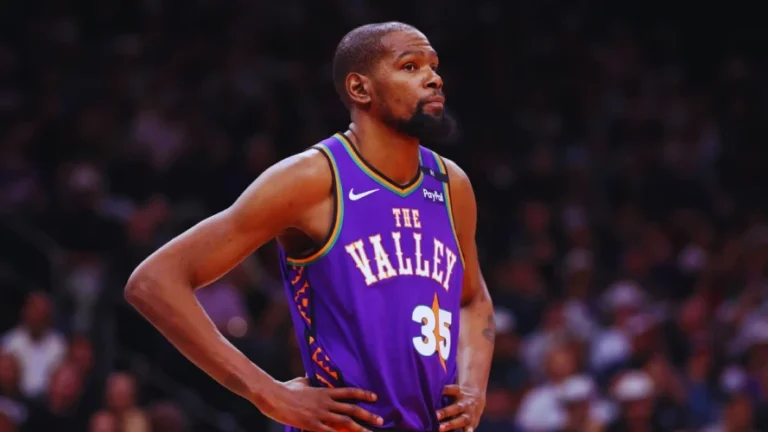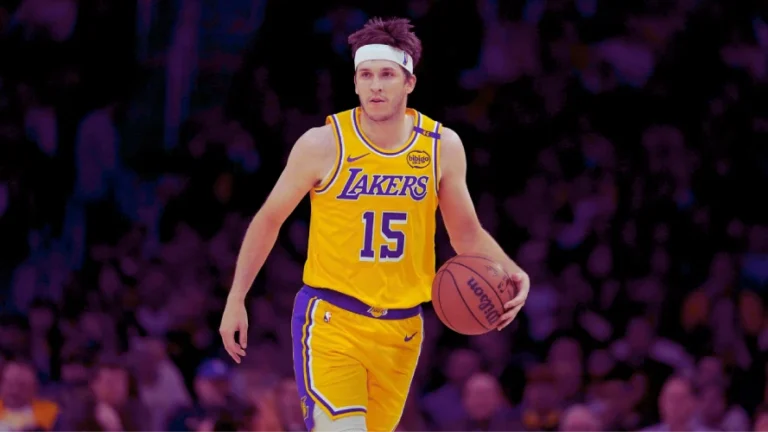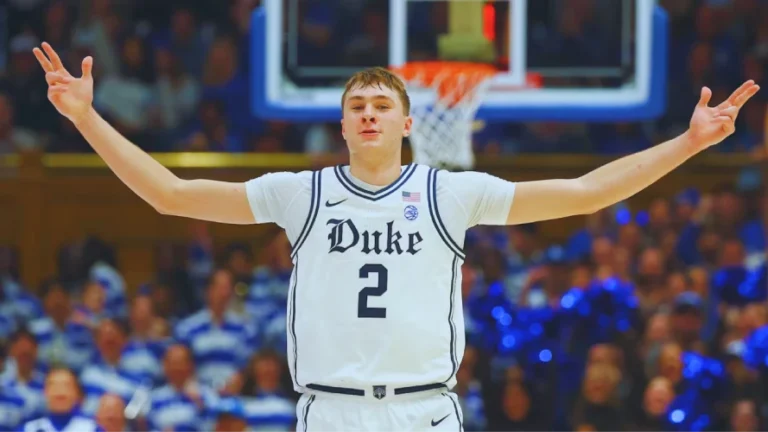In the ever-evolving world of the NBA, talent and money dance in a delicate rhythm. Each contract tells a story not just of athletic achievement, but of timing, value, and longevity. As the 2026-27 season approaches, two of the league’s greatest scorers—Paul George and Kevin Durant—find themselves on different ends of that story. Both remain elite in skill and influence, yet their projected earnings reflect the broader shifts within basketball’s economic landscape.
According to current contract projections, Paul George is set to earn approximately 54.1 million dollars, while Kevin Durant is expected to make 45 million dollars during the 2026-27 NBA season. At first glance, the numbers might surprise many. Durant has long been considered one of the most dominant offensive players in league history, while George, though talented, has dealt with inconsistency and injuries in recent years. Yet the balance of money does not always follow the scoreboard—it follows the contract.
The Money Breakdown
Paul George’s projected salary comes from the four-year, 211.5 million dollar maximum deal he signed with the Philadelphia 76ers, a franchise that bet heavily on his veteran leadership and two-way game. During the 2026-27 season, George will be 36 years old and entering the later stage of that contract, which also includes a player option for 2027-28. For a player known for his shooting touch, defensive instincts, and composure, the deal represents both security and recognition of a long, decorated career.
Kevin Durant, on the other hand, recently signed a two-year, 90 million dollar extension with the Houston Rockets, which includes his own player option for 2027-28. The deal keeps him under contract through his age-38 season. It is worth noting that Durant’s extension is around 30 million dollars below what his maximum contract could have been. According to Forbes and league sources, this discount is tied to the NBA’s evolving financial environment—specifically, luxury tax rules and the new apron penalties that make massive superstar deals increasingly complex for teams to manage.
This creates a fascinating contrast. George, who is not considered a top-five player, will out-earn Durant, a generational scorer, during the 2026-27 season. The figures highlight how market timing, contract structure, and team strategy shape financial outcomes as much as performance does.
The Context Behind the Numbers
At their cores, both contracts tell stories of adaptation. The Philadelphia 76ers saw Paul George as a stabilizing veteran presence alongside emerging stars, giving them playoff experience and spacing on the floor. They offered him a long-term deal that reflected both trust and necessity. For the Houston Rockets, signing Kevin Durant was less about a long horizon and more about short-term championship aspirations. Durant’s two-year extension was designed to give flexibility while maintaining competitiveness under the league’s rising tax system.
Durant’s decision to take less than the maximum was strategic. At 38, he remains one of the most efficient scorers in the NBA, averaging 26.6 points, 6 rebounds, and 4.2 assists per game during the 2024-25 season while shooting a remarkable 52.7 percent from the field. Few athletes in any sport maintain that level of performance deep into their 30s. Yet Durant has always been conscious of legacy and roster balance. His willingness to leave money on the table could be interpreted as an investment in his team’s future depth.
Paul George’s 2024-25 campaign painted a more subdued picture. Appearing in 41 games for the 76ers, he averaged 16.2 points, 5.3 rebounds, and 4.3 assists, shooting 43 percent from the floor. While these numbers are far from his career peak, they reflect his transition from primary scorer to seasoned facilitator—a player whose value now lies in experience, versatility, and composure in tight moments.
Performance Meets Paycheck
Comparing George and Durant purely on performance can feel unfair, given the different stages of their careers and roles. Durant remains a top-tier scorer capable of taking over games. George, meanwhile, has evolved into a veteran presence whose skill set complements younger stars. Yet their contracts are shaped not by reputation alone, but by market conditions, collective bargaining rules, and team needs.
Durant’s salary may be lower, but his career earnings surpass any player in NBA history. He has played the financial game as masterfully as he plays basketball. His current deal with Houston reflects maturity—balancing competitiveness with practicality.
For George, the 76ers’ commitment underscores their belief that veteran leadership is worth the price tag. His salary is a reflection of faith and timing. In a league driven by youth, his contract proves that experience still commands value.
The Bigger Picture: The Salary Cap Shift
Behind every star contract is the invisible hand of the NBA salary cap, projected to reach 166 million dollars in 2026-27. That figure represents a seven percent increase from the previous season but remains below the ten percent growth ceiling allowed by the league.
The luxury tax threshold is expected to sit at 200 million dollars, with the first and second apron limits around 209 million and 222 million, respectively. These escalating numbers reveal how the league continues to grow in profitability while tightening financial rules to ensure competitive balance.
Teams must now navigate not only the challenge of signing stars but also maintaining roster depth without crossing harsh penalties. Durant’s smaller deal may have been a direct response to these financial guardrails, while George’s fully loaded contract fits within Philadelphia’s more flexible payroll timeline.
Age, Legacy, and the Human Element
Numbers tell part of the story, but the human side matters just as much. Durant will be 38 years old in the 2026-27 season. His continued excellence defies time, yet the end of his career is in sight. Paul George will be 36, also nearing the twilight of his prime. Both players have endured injuries, comebacks, and countless playoff battles. Their contracts are as much a celebration of resilience as they are of skill.
These salaries are milestones, marking careers that have helped define modern basketball. They represent trust teams believing that these veterans can still carry, teach, and inspire. The younger generation watches closely, learning not only how to score but how to survive the grind of a decade-plus career.
Conclusion: More Than Money
The projected salaries of Paul George and Kevin Durant for the 2026-27 NBA season reflect more than just financial figures. They capture two distinct stories within a changing league one of longevity, the other of legacy. George’s higher paycheck is a testament to timing and contractual structure. Durant’s slightly lower figure is a strategic choice within a team-focused framework.
Both players have already cemented their places among the most accomplished in basketball history. Their salaries are not a competition, but a reflection of evolution the shifting nature of value in an era where stars are both athletes and brands.
As the 2026-27 season draws near, one thing is certain. Whether through George’s poised leadership or Durant’s unrelenting excellence, both men will continue to shape the game that has given them everything. And in doing so, they remind us that every number on a paycheck carries a story, written not only in dollars but in dedication, endurance, and love for basketball.




